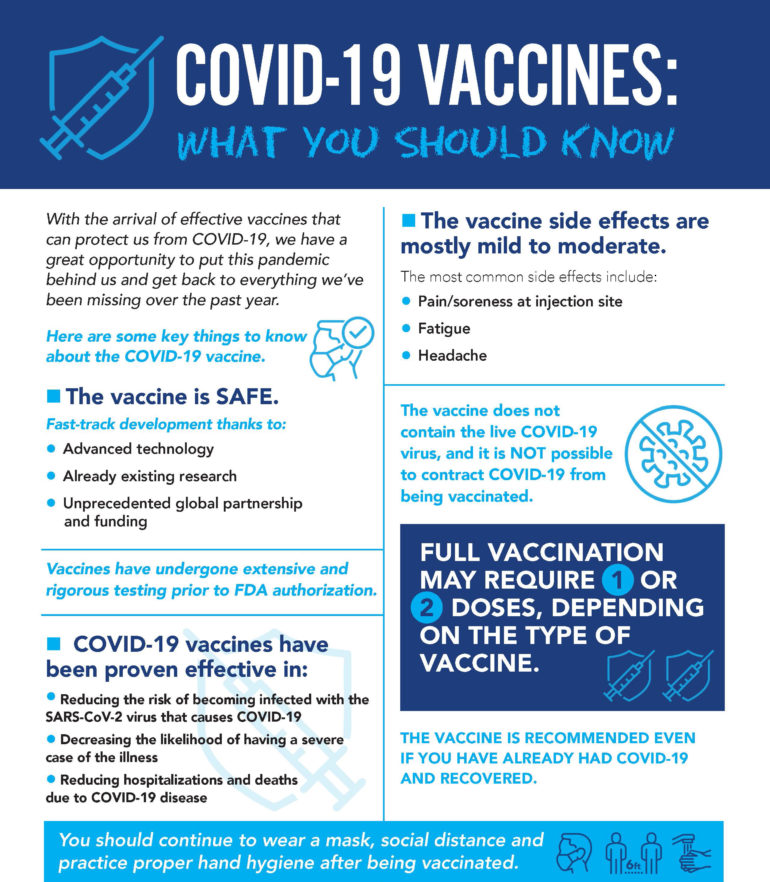When Freedom Baird got her first dose of Moderna’s vaccine in February, she wasn’t sure what kind of side effects to anticipate.
Baird is a COVID-19 long-hauler – she’s had lingering shortness of breath and chest pain for roughly a year. Many people who’ve had a prior infection develop more side effects in response to the first vaccine dose than the second. An average person, meanwhile, typically feels more run-down after their second shot.
Baird’s age complicated her expectations: She’s 56, and clinical trials have shown that people over 55 often develop fewer vaccine side effects. As it turns out, she didn’t feel much.
“It was really just that first day of feeling achy and flu-y,” Baird told Insider.
While doctors can’t predict exactly how someone will respond to a coronavirus vaccine, they’ve identified a few patterns based on a person’s age, sex, health status, and which dose they’re receiving.
Clinical trials suggest that side effects are generally more pronounced among women and younger adults, especially after their second dose.
Dose two usually comes with more severe side effects
The most common side effect for all three authorized US vaccines is pain or swelling at the injection site: Nearly 92 percent of participants in Moderna’s clinical trial developed this side effect. in Pfizer’s trial, 84 percent of participants reported that, as did 49 percent in Johnson & Johnson’s.
Other common side effects include fatigue, headache, and body or muscle aches. Around 65 percent of vaccine recipients in Pfizer’s and Moderna’s trials, and 38 percent in Johnson & Johnson’s, developed fatigue.
For those who haven’t had COVID-19 before, side effects tend to be more numerous and severe after the second dose.
Roughly twice as many participants in Pfizer’s trial developed chills and joint pain after their second dose than after their first. In Moderna’s trial, meanwhile, around five times as many participants developed chills after their second dose than their first.
Fevers were also far more common among second-dose recipients than first-dose recipients in both trials.
People who’ve had COVID-19 may develop more side effects after dose 1
A small study from the Icahn School of Medicine at Mount Sinai found that vaccine side effects such as fatigue, headaches, and chills were more common among people with pre-existing immunity to the coronavirus than people who’d never been infected before.
Around 73 percent of vaccine recipients who’d previously had COVID-19 developed side effects after dose one of Pfizer’s or Moderna’s shot, compared to 66 percent of vaccine recipients who’d never gotten infected before.
“If you’ve already had a COVID-19 infection, you’ve developed memory cells from that infection,” Dr. Vivek Cherian, a Baltimore-based internal medicine physician, told Insider.
“If you were ever to be exposed to the infection again, your body would basically be able to respond quickly and more robustly that second time around,” he added.
“That’s why you tend to have more strong side effects from that initial vaccine.”
Younger adults may feel more run-down after their shots than older people
Our immune systems gradually deteriorate as we age, which means older people’s bodies don’t work as hard to defend them against foreign invaders – including the protein introduced to the body via a vaccine.
“Younger individuals have a much more vigorous immune response, so it should make sense that they would also have more side effects,” Cherian said.
After one dose of Moderna’s shot, 57 percent of people younger than 65 developed side effects, compared to 48 percent of those older than 65. After the second dose, nearly 82 percent of people in the younger group developed side effects, compared to nearly 72 percent of older adults.
Pfizer broke down its data slightly differently: Around 47 percent of people ages 18 to 55 developed fatigue after dose one, whereas 34 percent of people ages 56 and older reported that side effect. After dose two, the numbers rose to 59 percent and 51 percent, respectively.
After Johnson & Johnson’s one-shot vaccine, nearly 62 percent of people ages 18 to 59 developed side effects, compared to 45 percent of people ages 60 and up.
Women can expect more side effects in general
The Centers for Disease Control and Prevention analyzed Americans’ reactions to nearly 14 million doses of the Pfizer and Moderna shots from December to January.
The results showed that roughly 79 percent of instances of vaccine side effects reported to the CDC came from women, though just 61 percent of doses were administered to women overall.
Cherian said women tend to react more strongly to vaccines for polio, influenza, measles, and mumps as well.
“All of these vaccines in general, women tend to have greater side effects,” he said. “They’re even more pronounced for a pre-menopausal woman compared to a post-menopausal woman.”
Scientists suspect the difference has to do with estrogen levels.
“Testosterone tends to be an immune-suppressive hormone and estrogen tends to be an immune stimulant,” Cherian said. “So more than likely it’s the estrogen hormone – that’s why females tend to have more side effects.”
Most high-risk medical conditions won’t lead to stronger side effects
People with weakened immune systems don’t mount a strong defense against viral infections in general, so they’re particularly vulnerable to severe COVID-19. For that reason, the CDC recommends that these groups get vaccinated right away.
But it’s possible that immunocompromised people, such as cancer patients, won’t mount a strong immune response to the vaccine, either.
“Your immune response essentially dictates your side effects, so if you’re immunocompromised, you may not necessarily be having as many side effects, but you should still absolutely get vaccinated,” Cherian said.
The vaccines should provide immunocompromised people with at least some protection against severe COVID-19, even if they don’t feel any side effects – though the effectiveness may be lower than for the average person.
Cherian said that for people with autoimmune conditions, meanwhile, the side effects probably won’t be any worse than for the average person.
“If you have those high risk factors, you really, really want to get vaccinated,” he said.
“Dealing with a few side effects of some diarrhea or some muscle aches is a much, much better thing than some of those serious, potentially life-threatening side effects of the COVID-19 infection.”
This article was originally published by Business Insider.
More from Business Insider:



